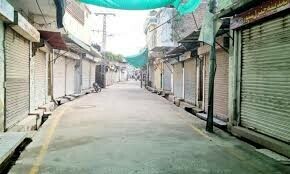
TUMANGU: Patrick Anywar, 14, lies curled up naked in the dust and midday heat of a Ugandan village, struggling to look up at his younger brother and sister playing in front of the family home.
After a minute's effort to face his siblings, Anywar's head slumps onto his chest and his body gripped by convulsions.
Anywar is one of more than 3,000 children in northern Uganda who are suffering from a debilitating mystery ailment known as nodding disease, which has touched almost every family in the village of Tumangu.
For several years, scientists have tried and failed to determine the cause of the illness, which locals say has killed hundreds of youngsters.
What they do know is that the disease affects only children and gradually devastates its victims through debilitating seizures, stunted growth, wasted limbs, mental disabilities and sometimes starvation.
Anywar's mother, Rugina Abwoyo, has already lost one son, named Watmon, to the disease in 2010. Now she says she can do little but watch on helplessly as another child slips away.
“Before he was walking and running like other children, but now someone always has to stay home to look after him,” Abwoyo told AFP.
“The disease is terrible – it does not let him drink or eat by himself.” Walking along footpaths cut through the sorghum plantations, Joe Otto, a volunteer health worker, explains how nodding disease has ravaged Tumangu, about 450 kilometres north of the capital Kampala.
“There are 780 people living in this village and we have 97 cases of the disease. It has affected almost every family,” Otto, 54, told AFP.
Whenever sporadic deliveries of medicine arrive at the local health centre several kilometres away, Otto pedals his bicycle to fetch the drugs. But he knows that they only offer a short-term solution.
“We are giving out drugs for epilepsy, like carbamazepine, but this disease is different from epilepsy,” Otto said.
Instead, as the disease has torn through their community, local residents have moved from fear to a grim acceptance, Otto says.
“We started saying that the patient who had died was the one who had been cured, because finally they were at rest from this painful disease,” Otto said.
'We hope that our youngest can be saved'
Scientists are trying to find a cure since 2010, researchers ranging from epidemiologists to environmental experts, neurologists, toxicologists and psychiatrists have carried out a range of tests.
Investigations have looked at possible links between the disease and everything from a parasite that causes river blindness, to malnutrition and the after-effects of a civil war that ravaged northern Uganda for decades.
“We looked at all this, but unfortunately we were not able to pinpoint any significant contributing or risk factors,” said Miriam Nanyunja, disease control and prevention officer at the World Health Organisation in Kampala.
“The search for the causative agent is still ongoing,” she added.
Often the results have thrown up more questions than answers.
Scientists do not know if the disease is linked to similar outbreaks in neighbouring South Sudan and Tanzania.
Efforts continue to understand if the disease is still spreading or has peaked – and why it is seems confined only to certain communities.
Last month, after pressure from lawmakers from affected areas, Uganda's health ministry produced an emergency response plan to try to identify and control the disease.
However, Nanyunja says that while the search for the cause and a possible cure goes on, for now, doctors can only focus on trying to alleviate the symptoms.
“There are many diseases that we continue to treat symptomatically, without knowing the exact cause,” Nanyunja said.
But for Patrick Anywar, any attempts to curb or cure the disease may come too late.
“We are hoping that the doctors work very hard to get the cure for this disease,” his mother Abwoyo says.
“There is no future for us as so many children have already been affected, but we hope that our youngest can be saved.”













































Dear visitor, the comments section is undergoing an overhaul and will return soon.